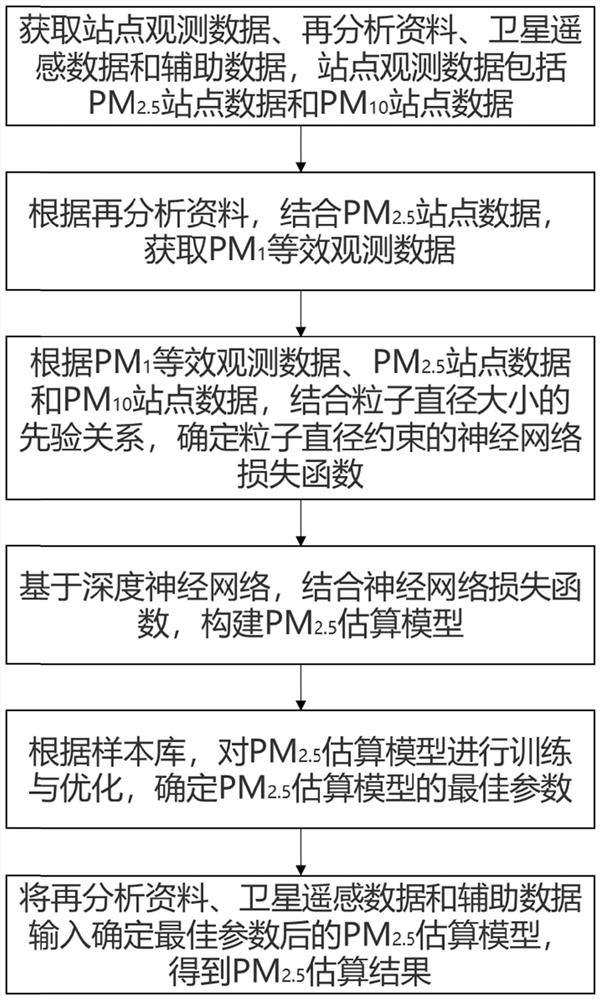Particle diameter constrained PM2.5 deep learning remote sensing estimation method
A particle diameter, deep learning technology, applied in neural learning methods, chemical machine learning, scientific instruments, etc., can solve problems such as high value underestimation, low value overestimate, etc., to reduce outliers, improve robustness, and alleviate high Effects of undervaluation and undervaluation
- Summary
- Abstract
- Description
- Claims
- Application Information
AI Technical Summary
Problems solved by technology
Method used
Image
Examples
Embodiment Construction
[0054] In order to make the purpose, technical solution and advantages of the present application clearer, the present application will be further described in detail below in conjunction with the accompanying drawings and embodiments. It should be understood that the specific embodiments described here are only used to explain the present application, and are not intended to limit the present application.
[0055] In order to make the content and technical solutions of this application clearer, the relevant terms and meanings are explained:
[0056] PM 1 : A general term for solid particles or liquid droplets with an aerodynamic equivalent diameter less than or equal to 1 micron in the ambient air, also known as particulate matter that can enter the lungs.
[0057] PM 2.5 : Generally refers to fine particles, which means particles with an aerodynamic equivalent diameter less than or equal to 2.5 microns in the ambient air.
[0058] PM 10 : Usually refers to the particulat...
PUM
 Login to View More
Login to View More Abstract
Description
Claims
Application Information
 Login to View More
Login to View More - R&D
- Intellectual Property
- Life Sciences
- Materials
- Tech Scout
- Unparalleled Data Quality
- Higher Quality Content
- 60% Fewer Hallucinations
Browse by: Latest US Patents, China's latest patents, Technical Efficacy Thesaurus, Application Domain, Technology Topic, Popular Technical Reports.
© 2025 PatSnap. All rights reserved.Legal|Privacy policy|Modern Slavery Act Transparency Statement|Sitemap|About US| Contact US: help@patsnap.com



